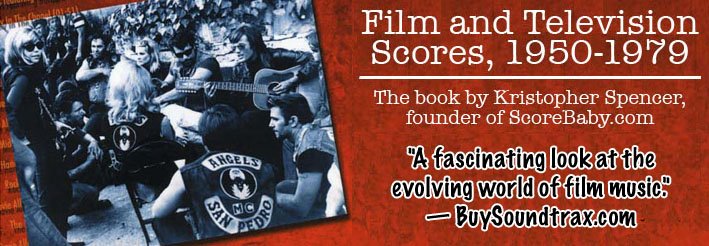
During the ’50s, certain filmmakers pushed the boundaries of subject matter. Elia Kazan transplanted Tennessee Williams’ melodrama
A Streetcar Named Desire (’51) from Broadway, complete with its original cast. The film’s hothouse atmosphere of sexual frustration is made all the more palpable by Alex North’s influential jazz-tinged score.
A few years later, Kazan made a film that was even more brazen in its suggestive sexuality as one of its characters is a “child bride.”
Baby Doll (’56) concerns a cotton gin owner married to a
Lolita-esque teenager who is holding out on her hubby sexually until she turns 20. Another man attempts to seduce the girl and steal her husband’s business. Kenyon Hopkins’ sultry score, as orchestrated by Ray Heindorf, lends
Baby Doll an atmosphere of decadent Southern charm. The lush score is like a jazz symphony, with occasional lapses into small group jazz and blues, featuring soloists on harmonica, saxophone, trumpet and guitar. The only break in musical character comes when Smiley Lewis, the legendary New Orleans R&B artist, is featured on the rollicking “Shame, Shame, Shame.” The Legion of Decency condemned the film, though that hardly hurt its box office.
– from Chapter 3: Sexploitation Serenade of Kristopher Spencer’s
Film and Television Scores, 1950-1979
 Kristopher Spencer, author of Film and Television Scores, 1950-1979, and JazzWrap contributor, will discuss crime jazz soundtracks with Scott Greenberg, host of WGWG radio's "Debts No Honest Man Can Pay". They'll play selections by Alex North, Henry Mancini, Elmer Bernstein, Lalo Schifrin, Quincy Jones and more.
Kristopher Spencer, author of Film and Television Scores, 1950-1979, and JazzWrap contributor, will discuss crime jazz soundtracks with Scott Greenberg, host of WGWG radio's "Debts No Honest Man Can Pay". They'll play selections by Alex North, Henry Mancini, Elmer Bernstein, Lalo Schifrin, Quincy Jones and more.














.jpg)











.jpg)






















